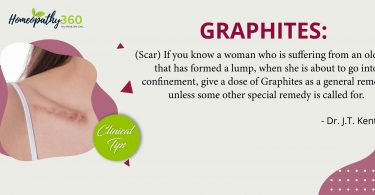Abstract:
The paper submits results of investigations designed to study efficacy of homeopathic medicines in treating peptic ulcer. Prospects are shown of employment of homeopathic therapy in modern treatment regimens for peptic ulcer. The place is substantiated by the authors of homeopathy in surgical, therapeutic, in-patient, out-patient, sanatorium-and-health resort treatment settings.
Definition:
Peptic ulcer disease (PUD) refers to a group of ulcerative disorders of the upper GI tract that require acid and pepsin for their formation.
Ulcers differ from gastritis and erosions in that they extend deeper into the muscularis mucosa.
The three common forms of peptic ulcers include:
1. Helicobacter pylori (HP)- associated ulcers,
2. Nonsteroidal antiinflammatory drug (NSAID)-induced ulcers,
3. And stress-related mucosal damage (also called stress ulcers).
Introduction:
Peptic ulcer disease is a condition that causes ulcers (open sores) to develop in the lining of your digestive tract. “Peptic” means it’s related to digestion. The word is derived from pepsin, the major digestive enzyme that your stomach produces.
Pepsin and stomach acid are the active ingredients in your stomach juices that help to chemically break down food for digestion. Some of these juices also pass into the first part of your small intestine (duodenum). By design, these juices are highly corrosive. All of your gastrointestinal tract has a protective mucous lining that insulates it from the substances inside. It’s especially strong in your stomach and duodenum. But in peptic ulcer disease, this protection fails, and digestive juices corrode through the lining. An ulcer is an erosion that penetrates through all three layers of the mucous lining (mucosa). Most peptic ulcers occur in your stomach or duodenum, where gastric juices are most active. Less commonly, they can also occur elsewhere in your Gl tract.
Fig. 1.Peptic Ulcer
Etiology:
Peptic ulcer disease may be due to any of the following:
• H pylori infection
• Drugs
• Lifestyle factors
• Severe physiologic stress
• Hypersecretory states (uncommon)
• Genetic factors
• Additional Etiologic Factors
Any of the following may be associated with peptic ulcer disease:
• Hepatic cirrhosis
• Chronic obstructive pulmonary disease
• Allergic gastritis and eosinophilic gastritis
• Cytomegalovirus infection
• Graft versus host disease
• Uremic gastropathy
• Henoch-Schönlein gastritis
• Corrosive gastropathy
• Celiac disease
• Bile gastropathy
• Autoimmune disease
• Crohn disease
• Other granulomatous gastritides (eg, sarcoidosis, histiocytosis X, tuberculosis) • Phlegmonous gastritis and emphysematous gastritis
Type:
You can have two types of peptic ulcer disease:
• Gastric ulcer. You get this on your stomach lining.
• Duodenal ulcer. This appears at the top end of the small intestine, an organ that digests and absorbs much of the food you eat.
Fig. 2. Difference between a Gastric Ulcer and Peptic Ulcer
PATHOPHYSIOLOGY:
Peptic ulcers are defects in the gastric or duodenal mucosa that extend through the muscularis mucosa. The epithelial cells of the stomach and duodenum secrete mucus in response to irritation of the epithelial lining and as a result of cholinergic stimulation. The superficial portion of the gastric and duodenal mucosa exists in the form of a gel layer, which is impermeable to acid and pepsin. Other gastric and duodenal cells secrete bicarbonate, which aids in buffering acid that lies near the mucosa. Prostaglandins of the E type (PGE) have an important protective role, because PGE increases the production of both bicarbonate and the mucous layer.
In the event of acid and pepsin entering the epithelial cells, additional mechanisms are in place to reduce injury. Within the epithelial cells, ion pumps in the basolateral cell membrane help to regulate intracellular pH by removing excess hydrogen ions. Through the process of restitution, healthy cells migrate to the site of injury. Mucosal blood flow removes acid that diffuses through the injured mucosa and provides bicarbonate to the surface epithelial cells.
Under normal conditions, a physiologic balance exists between gastric acid secretion and gastroduodenal mucosal defense. Mucosal injury and, thus, peptic ulcer occur when the balance between the aggressive factors and the defensive mechanisms is disrupted. Aggressive factors, such as nonsteroidal anti-inflammatory drugs (NSAIDs), H pylori infection, alcohol, bile salts, acid, and pepsin, can alter the mucosal defense by allowing the back diffusion of hydrogen ions and subsequent epithelial cell injury. The defensive mechanisms include tight intercellular junctions, mucus, bicarbonate, mucosal blood flow, cellular restitution, and epithelial renewal.
The gram-negative spirochete H pylori was first linked to gastritis in 1983. Since then, further study of H pylori has revealed that it is a major part of the triad, which includes acid and pepsin, that contributes to primary peptic ulcer disease. The unique microbiologic characteristics of this organism, such as urease production, allows it to alkalinize its microenvironment and survive for years in the hostile acidic environment of the stomach, where it causes mucosal inflammation and, in some individuals, worsens the severity of peptic ulcer disease.
When H pylori colonizes the gastric mucosa, inflammation usually results. The causal association between H pylori gastritis and duodenal ulceration is now well established in the adult and pediatric literature. In patients infected with H pylori, high levels of gastrin and pepsinogen and reduced levels of somatostatin have been measured. In infected patients, exposure of the duodenum to acid is increased. Virulence factors produced by H pylori, including urease, catalase, vacuolating cytotoxin, and lipopolysaccharide, are well described.
Most patients with duodenal ulcers have impaired duodenal bicarbonate secretion, which has also proven to be caused by H pylori because its eradication reverses the defect.The combination of increased gastric acid secretion and reduced duodenal bicarbonate secretion lowers the pH in the duodenum, which promotes the development of gastric metaplasia (ie, the presence of gastric epithelium in the first portion of the duodenum). H pylori infection in areas of gastric metaplasia induces duodenitis and enhances the susceptibility to acid injury, thereby predisposing to duodenal ulcers. Duodenal colonization by H pylori was found to be a highly significant predictor of subsequent development of duodenal ulcers in one study that followed 181 patients with endoscopy-negative, nonulcer dyspepsia.
HOMEOPATHIC APPROACH TO PEPTIC ULCER:-
Homeopathy considers Peptic ulcer as a malfunction of one or more of our body systems. This is a result of a slow degenerative process due to the lack of adequate bodily supplies of the elements necessary for normal function and rejuvenation of affected organs. Homeopathic medicines have a remarkable healing property on the esophageal, gastric or duodenal mucosa, by counteracting the H. Pylori infection, reducing edema and the amount of acid that our stomach makes. Homeopathic treatment is safe and gentle, without side-effects. Homoeopathy medicines are prescribed on the basis of physical, emotional, and genetic make up that individualizes a person. This constitutional approach surrounding mind and body works at the root-level. Homoeopathy is very effective in managing all the symptoms of Peptic ulcers and also plays an important role in preventing relapse of the condition and improving the general health of the person. Another outstanding thing about Homeopathy is that people on multiple medications can safely take Homeopathic medicines. Homeopathic drugs are non-habit forming and have no addictive characteristics. Homeopathy has an exceptional proven safety record with the FDA with 200 years of clinical effectiveness. Since it treats in totality, it leads to a permanent long-lasting cure, rather than a temporary suppression of symptoms.
Homeopathic Medicine for Peptic Ulcer Disease:
Phosphorus: For Stomach Ulcers where Cold Drinks bring Relief
Phosphorus is rated among the most reliable medicines for stomach ulcers where having a cold drink relieves pain. Burning in the stomach after eating is complained of. Along with this, sour, bitter belching may also be experienced in such cases. Phosphorus is made its place among the top-rated Homeopathic medicines for stomach ulcers with the above symptoms.
Graphites: For Stomach Ulcers with Vomiting after Eating
In case of ulcers with vomiting immediately after eating food, Graphites has shown the most promising results among medicines for stomach ulcers. Constrictive and burning pain in the stomach is experienced after eating. Excessive belching, the taste of ingesta is also an attending symptom in such cases where Graphites is prescribed as one of the most reliable medicines for stomach ulcers.
Nux Vomica: For Stomach Ulcers where Eating Worsens Pain
Nux Vomica has shown the most satisfactory results in stomach ulcer cases where pain in the stomach is felt from eating even the smallest amount of food. The stomach region is also sensitive to touch in such cases. Nux Vomica is also one of the best-suited medicines for stomach ulcers where spicy food, coffee, tobacco, and alcoholic drinks worsen the symptoms. Tightness and pressure may be felt in the stomach after eating. Nausea, vomiting, eructations, flatulence, and heartburn may accompany the above symptoms.
Argentum Nitricum: For Stomach Ulcers with Radiating Pains
In my experience, Argentum Nitricum rates among the best medicines for stomach ulcers. This medicine is well indicated when sharp ulcerative or burning pain is felt in the stomach and radiates to other regions of the abdomen. The pain is sometimes gnawing in nature. Symptoms such as belching, nausea, vomiting may also appear along with these radiating pains. Abdominal distension may also be present in such cases where Argentum Nitricum will prove one of the most effective medicines for stomach ulcers.
Kali Bichromicum: For Ulcers in Stomach
Kali Bichromicum is another of the top-grade medicines for stomach ulcers. I have seen amazing recoveries in gastric ulcer cases with Kali Bichromicum. It is indicated in round ulcers with a feeling of heaviness in the stomach soon after eating. The food seems to sit in the stomach like a load. Appetite is low in cases where Kali Bichromicum will work as one of the most effective Homeopathic medicines for stomach ulcers.
Lycopodium: For Boated Abdomen
Lycopodium has proved itself as the most useful among medicines for stomach ulcers where the main symptoms are burning, constrictive pains attended with marked flatulence and
fullness/bloating of the abdomen. Bloating starts soon after eating. A person in need of Lycopodium may get relief in pain from taking warm water. Farinaceous food like cabbage and beans worsen the symptoms. Lycopodium Clavatum is known among the best medicines for stomach ulcers with any of the above-mentioned symptoms.
Carbo Veg: For Stomach Ulcers
Carbo Veg is another of the prominently indicated medicines for stomach ulcers. It is most helpful when burning pain in the stomach is accompanied by sour belching or heartburn. The pain may extend from the stomach to the back. The epigastric area may also be sensitive and tender to touch. Eating the smallest amount of food, even light food, worsens the symptoms in such cases where Carbo Veg will prove the most effective among Homeopathic medicines for stomach ulcers to heal the condition.
Hydrastis Canadensis: For Stomach Ulcers with Weight Loss
In my clinical practice, Hydrastis has proved extremely effective in treating stomach ulcers where they are accompanied by weight loss and emaciation. A key symptom is a constant sore feeling in the stomach. Cutting and sharp pain in the stomach may also be present in cases where Hydrastis works as one of the most effective medicines for stomach ulcers. Weakness and a loathing of food in epigastrium are other symptoms to look out for. Hydrastis is also one of the major medicines for chronic gastritis.
Graphitis: For Stomach Ulcers with Vomiting after Eating
In case of ulcers with vomiting immediately after eating food, Graphites has shown the most promising results among medicines for stomach ulcers. Constrictive and burning pain in the stomach is experienced after eating. Excessive belching, the taste of ingesta is also an attending symptom in such cases where Graphites is prescribed as one of the most reliable medicines for stomach ulcers.
Ornithogalum:
Ulceration arid cancer of both pylorus and caecum, with great distension of stomach, belching, offensive flatus, agonizing pain, must loosen clothes. Gastric or duodenal ulcers.
Acetic Acid:
Ulceration of the stomach, hot sour eructations, vomiting of blood and all food taken, gnawing pain, distension of the stomach, burning in the stomach and abdomen ameliorated by lying on the stomach. Flatulence and dropsy. Diarrhoea with pure blood. Anaemic, weak and emaciated. Loss of appetite.
Merc. Cor:
Ulceration of the large intestines with bloody stools.
Lachesis:
Gastric ulcer when the patient feels worse on waking. Cannot bear constriction of any kind, wants loose clothes. Cannot bear the heat of the sun.
Medorrhinum:
Duodenal ulcers with pain two hours after food; excessive flatulence and always better at the seaside. Give in 1M potency.
Uranium Nitricum:
Useful for pyloric and gastric ulcers. Vomiting of mucus mixed with blood and coffee-ground matter; stools tarry, dark.





